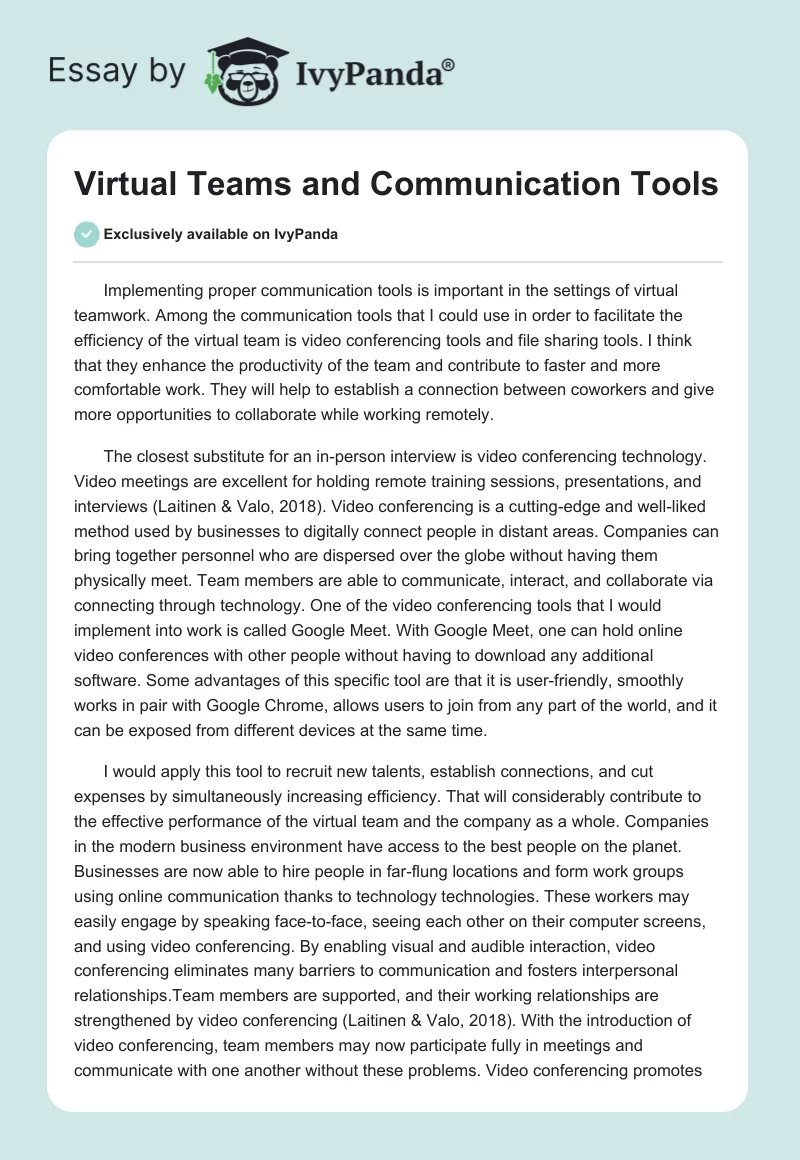
Navigating Collaboration: Virtual Team Communication Tools
In the dynamic landscape of remote work, effective communication is the linchpin holding virtual teams together. Virtual team communication tools play a pivotal role in fostering collaboration, enhancing productivity, and bridging the geographical gaps that characterize remote work environments.
The Shift to Remote Work and the Need for Virtual Communication Tools
The advent of remote work, accelerated by global events, has necessitated a shift in how teams communicate and collaborate. Traditional face-to-face interactions have been replaced by virtual meetings, making the selection of appropriate communication tools crucial for seamless connectivity among team members dispersed across different locations.
Video Conferencing Tools: Bringing Faces Closer
Video conferencing tools stand out as the cornerstone of virtual team communication. Platforms like Zoom, Microsoft Teams, and Google Meet enable face-to-face interactions, fostering a sense of connection and collaboration. These tools transcend mere audio communication, allowing teams to share screens, collaborate on documents, and engage in real-time discussions.
Real-time Messaging Platforms for Instant Connectivity
Real-time messaging platforms, exemplified by Slack and Microsoft Teams, provide virtual teams with instant connectivity. These tools facilitate quick exchanges, eliminating the delays associated with traditional email communication. With features like channels, direct messages, and file sharing, real-time messaging platforms create an environment conducive to swift and efficient communication.
Project Management Tools for Collaborative Workflow
Virtual teams often collaborate on projects that require structured workflows and task management. Project management tools such as Asana, Trello, and Jira offer centralized platforms for organizing tasks, tracking progress, and fostering collaboration. These tools streamline project workflows, ensuring that team members stay aligned and informed.
Collaborative Document Editing for Seamless Content Creation
Effective content creation and collaboration demand tools that enable simultaneous editing and feedback. Platforms like Google Workspace and Microsoft 365 provide collaborative document editing features, allowing team members to work on documents, spreadsheets, and presentations in real-time. This ensures that everyone is on the same page, quite literally.
File Sharing Platforms to Enhance Accessibility
In virtual team settings, accessibility to shared files and documents is paramount. File sharing platforms like Dropbox, OneDrive, and Google Drive facilitate seamless sharing and storage of files. These platforms ensure that team members can access relevant documents anytime, anywhere, promoting flexibility and accessibility.
Webinar and Training Tools for Skill Development
Continuous skill development and training are integral components of virtual team dynamics. Webinar and training tools, such as GoToWebinar and Zoom Webinar, facilitate interactive online sessions. These platforms enable virtual teams to participate in workshops, training sessions, and knowledge-sharing events, fostering professional growth.
Integration and Compatibility for Seamless Workflows
The effectiveness of virtual team communication tools lies in their ability to integrate seamlessly with existing workflows. Tools that offer integrations with popular applications, such as Slack integrating with project management tools or video conferencing platforms linking to calendars, enhance workflow efficiency and reduce the need for context-switching.
Ensuring Security and Data Privacy in Virtual Communication
As virtual team communication becomes prevalent, ensuring the security and privacy of communication tools is paramount. Platforms with end-to-end encryption, multi-factor authentication, and robust data privacy measures, like Signal or Cisco Webex, safeguard sensitive information, instilling confidence in virtual team interactions.
Choosing the Right Tools for Your Virtual Team
For organizations seeking to optimize their virtual team communication, Virtual team communication tools provide a curated selection of resources. Explore insights, reviews, and recommendations to make informed decisions about the virtual communication tools that best suit your team’s unique needs.
In conclusion, virtual team communication tools are instrumental in creating a cohesive and collaborative remote work environment. From video conferencing to project management and collaborative document editing, these tools empower virtual teams to overcome communication challenges and achieve seamless connectivity, regardless of geographical distances.
